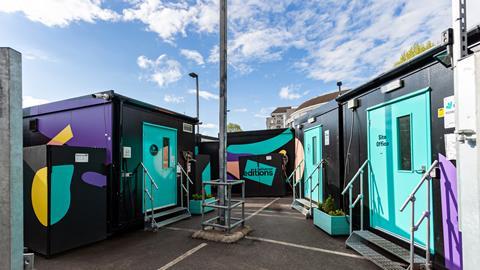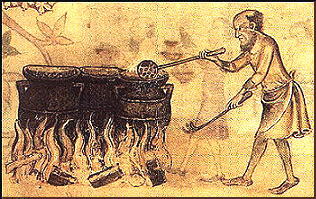Takeaway food - a brief history
- rosemary
- Jun 23, 2021
- 5 min read
Updated: Jul 21, 2021
"Since the dawn of time, the human race has always looked for ways to make their lives better. Most of these improvements revolve around food." Eat Street
And that includes all the ways of getting a meal that you haven't cooked yourself.
I recently read an article in The Guardian by Jack Shenker which was mostly about issues with Deliveroo, which I shall come to, but along the way it mentioned Dark Kitchens - which I had never heard of, and this led me to looking at the whole history of the concept of takeaway food - food you have not cooked yourself but which you eat at home, or whilst walking around. Of course I shall skim, and there are so many interesting things that could be further explored perhaps. But here goes for a brief overview.
"Once upon a time, eating out meant going to the food, not food coming to you."

At Pompeii, Herculaneum, Ostia Antica and other ancient Roman sites they have uncovered hundreds of thermopolia - sort of ancient fast food outlets. We saw this one on our visit to Ostia, but alas our arrival at this particular spot coincided with a school trip and so we could not take decent photographs. You can however, see the pictures on the wall which are a sort of menu, and behind the school group would have been the holes as in the photo at the top of the page, in which the food was cooked.
Although there is not a lot of information about it on a superficial trawl of the net, I am sure that virtually every other ancient civilisation would have had similar solutions to the food problem. After all most of the poor would not have had access to adequate cooking facilities, and they would also have been working extremely long hours. So the entrepreneurial minds of the day would surely have jumped upon ways of providing solutions, be it a takeaway shop, a stall on the street or just a basket slung around your neck filled with something tempting to eat. And maybe not that healthy either. After all the vendor would have been looking to making money.
“the food was good solid stuff for a cold morning, all calories and fat and protein and maybe a vitamin crying softly because it was all alone.” Terry Pratchett, Guards! Guards!
And so it continued down the centuries - street sellers of various kinds, bakers allowing the local women to put their stews and roasts in their ovens after the bread had been baked and sold, and shopfront takeaway.

Then in the nineteenth century the concept of the modern takeaway dinner began, so they say with pizza - specifically pizza Margherita - when, in 1898, the king and queen of Italy, the queen being Margherita, ordered Raffaelle Esposito - a local pizza cook to make a pizza especially for them and have it delivered. I suspect this is a bit of an urban myth but very appropriate don't you think, considering that pizza would have to be one of the principal takeaway meals today?
Around the same time, far away in India in Mumbai the dabbawala concept was introduced, whereby lunch, most often cooked at home by the wife in this case, is delivered to the husband at work. It's extremely complicated, efficient and huge, and much celebrated.

And as a slight aside here, Adam Liaw did a rating of the best takeaway foods to get delivered to your home and curry came out on top. Not tandoori though. That needs to be a bit crisp and goes a bit soggy whilst being delivered.
From there food delivery became a thing, as well as shops that made food specifically to be taken away and eaten at home.

The street stalls continued and they still survive around the world. Indeed street food is a very trendy thing and is often celebrated at various festivals, or in trendy precincts in cities. Street food, of a kind is also now taking over the food halls of the big shopping malls - for the shopping malls became the replacement for the high street. Street food these days tends to be more snack food though rather than a complete meal. Well that's what I think anyway. And some of it can be very high quality - like pizza in Rome:

The term fast food became a thing. It began with neighbourhood fish and chip shops, barbecued chicken shops and hamburger joints and eventually led to the rise of the fast food kings - McDonald's, KFC, Burger King, Pizza Hut et al.
At this point in time the takeaway thing was very much a lower class thing. The rich did not do this, unless they were 'slumming it' or when they were students perhaps. For the poor it was a cheaper way to eat. And initially at places like McDonald's - well still - you could actually dine in. It might even have been a treat, nay a birthday party venue for your kids. I remember the joy of upgrading from Hungry Jack's to Pizza Hut, where you could at least have a glass of wine with your pizza, when we treated our children after an excursion to the cinema. You could also take away the food, but, my memory may be false here, on the whole I think people ate in at such places. The pizza places in particular would deliver their pizzas to your home - never a good thing I think - they go soggy - but they used their own delivery boys and girls. Indian and Chinese restaurants began to supplement their dining in operations with takeaway - which you had to collect in person. People began to dine at home on takeaway, until today when, for the young in particular, it seems to be a regular thing.
"There are also people who want to sit at home on their comfy new couch and look at their big LCD screen, and act like hermits and not go out and meet anyone or see anyone else. And that's their choice as well." Bradley Woods - Australian Hotels Association
But it's not just doing it on your own. Eating on your couch was popularised and confirmed by such TV series as the hugely popular The Big Bang Theory whose central image was a group of friends eating takeaway together.

Which has its good and its bad points. There is camaraderie here, but the quality of the food is probably questionable, and all that packaging, recyclable though some of it is, is deplorable. A sign of the times though.
The really bad times of takeaway - the poor quality of the bulk of the food on offer that is - are perhaps over. Well not completely - the big companies are too firmly entrenched, although even they are being forced by legislation and by trends towards healthier eating, to improve their offerings and diversify. But now much more upmarket restaurants are investigating takeaway options - spurred on by the COVID pandemic, and lockdowns, but really building on something that was already moving that way - as witness the Big Bang clan and their social gatherings.
Which brings me to what started me on all of this - the delivery boom and dark kitchens. But I've run out of steam and it's time to cook our dinner - soup tonight because David has made some bread and there are things to be used in the vegetable drawer in the fridge. So tomorrow - Dark kitchens of which there are good and bad things to say. There always are.
As there are about takeaway. Takeaway has saved many a tired, overworked mum at the end of day at work. It has also fed some who can afford nothing else - or who have no means of cooking their own meal. Used occasionally as a 'treat' for your kids, or as an escape from cooking a meal - why not? Lazy and easily bettered more cheaply at home, yes, but not the end of the world. Just don't do it every day.




















Comments